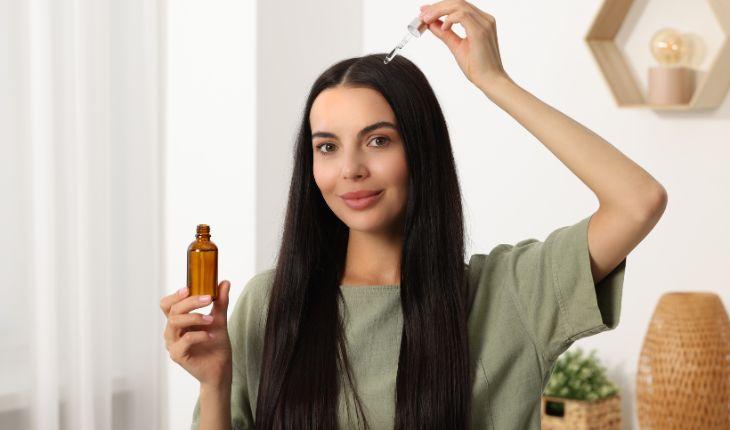Hair—the ultimate symbol of beauty, health, and confidence—has always held a special place in human identity. Whether it flows long and silky or sports a bold, cropped edge, hair has the power to elevate your personality and presence. But in a world filled with stress, pollution, harsh weather, and poor nutrition, maintaining a healthy mane has become increasingly challenging. As hair loss and thinning have become widespread concerns, the demand for effective hair growth products has surged—ushering in a new wave of innovation, science, and self-care.
Targeted Solutions: Different Hair Needs, Different Products
Hair types and problems are as diverse as fingerprints. A one-size-fits-all solution is a myth. For example, a person dealing with postpartum hair loss might need a different set of actives than someone combating male-pattern baldness. Similarly, chemically treated or heat-damaged hair demands reparative formulations with deep hydration and protein reconstruction.
Understanding this diversity, brands have evolved to create products tailored for specific concerns: thickening formulas for fine hair, detoxifying agents for oily scalps, DHT-blocking shampoos for hormonal hair loss, and gentle blends for sensitive skin types.
Here’s where Expert Market Research steps in with valuable insights. According to their in-depth analysis, there’s a growing trend among consumers preferring clean-label, toxin-free hair growth products that promise both safety and effectiveness. This consumer shift is pushing brands to move away from harmful sulfates, parabens, and silicones—driving innovation in organic, ayurvedic, and dermatologically tested alternatives.
The Science Behind Hair Growth: What’s Happening Beneath the Scalp
Hair growth is not just about slathering a serum or oil and hoping for a miracle. It is a biological process that starts at the root—the hair follicle. Each strand of hair grows from a follicle embedded deep within the scalp. The follicle's health depends on blood flow, nutrient supply, and hormonal balance. When these elements are compromised, the result is hair thinning, breakage, or even baldness.
Most hair growth products aim to target one or more stages of the hair growth cycle: anagen (growth), catagen (transition), telogen (rest), and exogen (shedding). Effective formulations seek to extend the anagen phase and shorten the telogen and exogen phases to boost overall hair density and length.
Hair Growth Products: Nature Meets Innovation
Today’s hair growth products are no longer limited to age-old oils and homemade concoctions. The modern shelf features an expansive variety of solutions, including scalp serums, leave-in treatments, growth shampoos, peptide-rich conditioners, and advanced hair masks. These aren’t just cosmetic—they are functional, backed by trichology (the science of hair and scalp).
What makes a product effective? It’s the formulation. Ingredients like biotin, niacin, caffeine, rosemary oil, castor oil, redensyl, keratin, and minoxidil are known for their stimulating effects on the scalp and hair follicles. While some ingredients nourish and thicken the hair shaft, others penetrate deep into the follicle to awaken dormant hair roots.
Interestingly, botanical actives are taking center stage, too. Extracts from plants like saw palmetto, ginseng, bhringraj, and aloe vera have shown strong anecdotal and clinical promise in promoting natural regrowth and improving scalp health.
Beyond Products: The Ritual of Scalp Care
While the right hair growth products can do wonders, they work best when paired with a mindful routine. Scalp care has emerged as a vital extension of skincare, emphasizing regular exfoliation, oil massages, and circulation-boosting rituals. The idea is simple: a healthy scalp is the foundation for thriving hair.
Incorporating tools like scalp massagers, derma rollers, and laser combs can amplify the impact of topical treatments. These tools stimulate blood flow, promote product absorption, and awaken inactive follicles—complementing the active ingredients in your growth serum or tonic.
Common Myths vs. Real Results
Despite a flood of online claims, it’s essential to separate hype from truth. No product delivers overnight results. Hair grows at an average rate of half an inch per month. So, patience and consistency are key. Moreover, shedding is natural—losing 50 to 100 strands a day is perfectly normal.
Also, beware of products that promise instant miracles without addressing the root cause. Hair loss can stem from internal imbalances such as thyroid dysfunction, nutritional deficiencies, stress, or genetics. A truly effective hair growth strategy involves a holistic approach—nourishing both body and scalp.
Expert Tip: Layer Your Hair Care Like Skincare
Just like you would cleanse, tone, and moisturize your face, your scalp and hair benefit from a layered routine. Begin with a gentle, sulfate-free shampoo to detox the scalp. Follow up with a conditioner rich in amino acids and keratin. Then, apply a concentrated growth serum directly to the scalp.
Lock in the moisture with a light hair oil or cream to seal the cuticles. This synergistic layering helps maximize the performance of each product, promoting healthier, stronger strands over time.
The Future of Hair Care Is Rooted in Science and Simplicity
Hair growth products have come a long way—from basic oils to biotechnology-powered solutions that combine tradition and science. Consumers today are more informed and cautious, seeking transparent ingredients, clinically proven benefits, and personalized routines.
Thanks to research-driven insights from platforms like Expert Market Research, brands are now more attuned to these evolving expectations, offering products that are not just luxurious in texture but transformative in results. The shift from reactive to proactive hair care is already reshaping the industry, where prevention and wellness are just as important as repair.
